- Home
- Walt Whitman
Drum-Taps: The Complete 1865 Edition Page 11
Drum-Taps: The Complete 1865 Edition Read online
Page 11
The wording here negates any promise of resurrection and hence of religious comfort: The soldier with Christ’s face is dead and divine, dead in his divinity, and his body, unlike Christ’s, does not rise again but lies again, as if the true end of the Gospel narrative were the deposition from the cross. The poem outlines a negative trinity in which the Father, Son, and Holy Spirit devolve into the elderly man, the boy, and the Christ-faced young man, who together mark the sacrifice of all the ages of manhood under the all-covering blanket of the war.
a farm picture
A glimpse of the pastoral America that the Civil War would destroy. The superseding of pastoral by the industrial development driving the Northern war machine is already implicit in the opening urban poems of Drum-Taps. It forms the subtext of the antiphonal “Give Me the Splendid Silent Sun,” to which “A Farm Picture” is a prelude. The fleeting lyric retains what the extended retraction abandons.
give me the splendid silent sun
Lines 1–8 form a synoptic paraphrase of the biblical creation narrative (Genesis 1–2): the sun (slightly out of sequence) presides over the successive appearance of vegetation, animal life, a garden, and a bride. But the “unmow’d grass” in line 3 recalls the biblical memento mori: “All flesh is grass, and all the goodliness thereof is as the flower of the field” (Isaiah 40:6).
Whitman’s call for “phantoms incessant” derives partly from his fascination with daguerreotypes and partly from his belief in animal magnetism (see note 51). Daguerreotype images change from positive to negative depending on the angle of observation; they are fragile, easily erased if brushed with a finger. For Whitman this fluidity exemplified a phantom state between corporeal and incorporeal substance also characteristic of the magnetic fluid. The people moving along the trottoirs (pavements) exhibit the same fluidity. They enter the phantom state by circulating magnetism through the city’s collective body. In an 1846 newspaper article, Whitman recounts a visit to the daguerreotype portrait gallery of John Plumbe on the corner of Murray Street and Broadway in Manhattan: “It is little else on all sides of you, than a great legion of human faces—human eyes gazing silently but fixedly upon you, and creating the impression of an immense Phantom concourse—speechless and motionless, but yet realities. You are indeed in a new world—a peopled world, though mute as the grave.” From The Brooklyn Daily Eagle, July 2, 1846.
Eyes: the immediate source of magnetism.
over the carnage rose prophetic a voice
Columbia: Whitman’s epithet for the postbellum nation; Columbia’s victory belongs to both North and South. “Columbia” is not a political union but a spiritual one. “Union,” however, remains key. The term “Columbia” was popularized by the marching song “Columbia, the Gem of the Ocean,” composed in 1843 by David T. Shaw, who also wrote the words; verse 3 begins “The Union, the Union forever!”
An inversion of Christ’s sacrifice.
Friends triune: a frank appropriation of the Holy Trinity, merging religious mystery with the union won through transcendental affection. The three named states connect the continental extremes of east and west through the war’s point of origin in “hot Carolina.”
More precious: alludes to any of several biblical passages praising wisdom or divine law above riches (e.g., Psalm 19:9–10, Proverbs 16:16), especially, with gender exchange, Proverbs 3:15: “She [a virtuous woman] is more precious than rubies, and all the things thou canst desire are not to be compared unto her.”
Michigan and Florida: an axis between the nation’s northern and southern borders, complementing the east-west axis of two lines earlier.
Whitman’s reason for measuring what he elsewhere calls “adhesiveness” or “manly love” by its capacity to conjoin men from different states is historical. Before the Civil War, the distinct identity of the states was strongly marked. Grammar typically favored the usage “The United States are”; after the war “is” became standard. The earlier sentiment, expressed in 1828 by Vice President John Calhoun of South Carolina, was strongest in the South but not exclusive to it; the union, Calhoun wrote, comprised “not a nation, but...a confederacy of equal and sovereign states”; see Susan Dunn, Dominion of Memories: Jefferson, Madison, and the Decline of Virginia (New York: Basic Books, 2007), 178.
“Hoops of iron”: used by coopers to bind staves into a barrel. The phrase also recalls Polonius’s advice to Laertes in Shakespeare’s Hamlet (I.3): “Those friends thou hast, and their adoption tried, / Grapple them to thy soul with hoops of steel.”
Tie you: into a true-love knot, symbolizing constancy, typically consisting of two identical knots interlocked.
year of meteors
The 19th Presidentiad: the Lincoln-Douglas election of 1860. Whitman coined the term “Presidentiad” knowing its Olympic connotations; he thus casts himself as a modern Pindar: “My word ‘Presidentiad,’ Oh! That is eminently a word to be cherished—adopted. Its allusion, the four years of the Presidency; its origin that of the Olympiad”; see Horace Traubel, With Walt Whitman in Camden, Vol. V: April 8–September 14, 1889 (Carbondale, IL: Southern Illinois University Press, 1964), entry of May 17, 1889. The ancient Olympics allowed rival Greek city-states to compete peacefully under the protection of a formal truce.
John Brown, hanged on December 2, 1859, for raiding the federal arsenal at Harpers Ferry, Virginia, on October 16 to arm slaves for insurrection. Brown received a saber wound when federal troops stormed the arsenal and killed or captured the raiders.
The census recorded a population of 31,443,231, a 35 percent increase from the previous count.
From the isthmus: To avoid the long, hazardous passage around Cape Horn, ships bearing gold from the California gold rush traveled from San Francisco to the Pacific coast of Panama, leaving passengers to cross the Panamanian jungle by land and board a ship bound for New York from Panama City. Regular passenger service in both directions began in 1849.
Sweet boy of England: Edward Prince of Wales, later King Edward VII (and anything but a stripling!). Whitman cut the ensuing purple patch from later editions; his infatuation with the prince also surfaces briefly in “A Broadway Pageant.”
Great Eastern: an iron sailing steamship designed by Isambard Kingdom Brunel, built in London, and launched in 1858; at the time the largest ship ever built.
The Great Comet of 1860 appeared on June 18, reached first-magnitude brightness as it traveled from north to south, and faded slowly, remaining visible to the naked eye until the end of July. Its inclusion among the “forebodings” of 1859–60 recalls the portents of Julius Caesar’s assassination mentioned by Shakespeare in Julius Caesar (“When beggars die there are no comets seen,” II.ii:30) and Hamlet (I.i:129–38). Caesar’s assassination plunged Rome into a bloody civil war.
Huge meteor procession...and was gone: a rare event identified by researchers at Texas State University, San Marcos, only in 2010. The “balls of unearthly light” are an earth-grazing meteor shower caused by a large meteor swerving through the earth’s atmosphere back into space and then shattering into fragments that fall in fireballs along a single path. The artist Frederic Church painted the same phenomenon after observing it in Catskill, New York, on July 20, 1860. The “strange huge...procession” was widely regarded as a sign of impending war.
the torch
Moves across the black water: like the ferry that carries the shades of the newly dead across the Styx, the black river separating earth from the underworld in classical mythology.
years of the unperform’d
The Law: the Thirteenth Amendment, section 1 of which reads: “Neither slavery nor involuntary servitude, except as a punishment for crime whereof the party shall have been duly convicted, shall exist within the United States, or any place subject to their jurisdiction.” Caste: euphemism for slavery.
Whispers: telegraphic signals carried undersea by transatlantic cable. The reference is to the first, short-lived cable, laid in 1858; the second, faster and more durable, postdate
s Drum-Taps. The Great Eastern (see note 104) laid it in 1866.
Project their shapes: as by a magic lantern, which used a concave mirror behind a light source to project images through glass slides. By the nineteenth century, magic lanterns could project moving as well as still images; in America their “ghost shows” were a popular form of entertainment.
year that trembled and reel’d beneath me
Probably 1862. The Union suffered a series of calamitous defeats in Virginia during that summer, reversed in the battle of Antietam in September but at great cost (Antietam is the bloodiest battle in American history). December brought the Union rout at Fredericksburg that impelled Whitman to become a hospital volunteer (see general note for “A Sight in Camp in the Day-Break Grey and Dim”).
the veteran’s vision
Rifle balls: Minié or “minnie” balls, conical lead bullets with a base that expanded on impact. The bullets could be loaded quickly into a rifle’s muzzle and fired accurately at a distance; both sides in the Civil War used them extensively. Invented in 1849, Minié balls multiplied the killing power of rifles and enabled their use as combat weapons.
Grape: an artillery charge consisting of a bag of small iron balls or slugs that spread out like a shotgun blast when fired.
An allusion to “The Star-Spangled Banner” (“By the rocket’s red glare / The bombs bursting in air”) and thus to the defense of the flag. The 1814 poem by Francis Scott Key, coupled soon after publication to the tune of the British drinking song “To Anacreon in Heaven,” became the national anthem only in 1931; by the Civil War era, however, it was already a popular patriotic song.
as toilsome i wander’d virginia’s woods
The genre of this famous poem is the epitaphic lyric, obsolete in the mid-nineteenth century but still familiar through Thomas Gray’s “Elegy Written in a Country Churchyard” (1750). Gray preserves the main characteristic (derived from ancient Greek models): a memorial inscription summoning a passing traveler to pause and reflect: “Some frail memorial still erected nigh, / With uncouth rhymes and shapeless sculpture deck’d, / Implores the passing tribute of a sigh” (lines 78–80). The elegy closes with an epitaph for “A youth to Fortune and to Fame unknown,” a match for Whitman’s unknown soldier.
Fallen or falling leaves traditionally symbolize the numberless dead, from Homer (Iliad VI:146) to Virgil (Aeneid VI:309–10) to Dante (Inferno III:112–13) to Shelley (“Ode to the West Wind,” lines 1–5), among many others.
The inscription nailed to the tree is cruciform; like the third soldier in “A Sight in Camp in the Day-Break Grey and Dim,” the nameless comrade mourned on the “tablet” (a rough wooden plaque) is an avatar of Christ as “brother of all.” The text thus inscribes two epitaphs, not one: the first wears away on the tree but the second recurs in the speaker’s memory. The poem turns these involuntary memories into ritual observance; the remembered inscription becomes a refrain and the reader inherits the position of the wandering speaker.
hymn of dead soldiers
Carbines: short-barreled repeating rifles designed for cavalry.
The images of the cavalry, the tan-faced horsemen, and (below) the drummers all negate counterparts in preceding poems: “Cavalry Crossing a Ford,” “O Tan-Faced Prairie-Boy,” and “Beat! Beat! Drums!,” respectively. The negations identify “Hymn of Dead Soldiers” as a palinode, a poem retracting an earlier one by the same author. “Hymn” thus resembles the phantoms it invokes below; it turns, like a daguerreotype (see note 89), from positive to negative by assuming the paradoxical form of a silent chant.
Whitman’s turn to the phantoms of the dead recalls Odysseus’s descent to the underworld in Book XI of Homer’s Odyssey. The “fœtor” of the battlefield (see note 120) forms a link: Odysseus must make a blood sacrifice to speak with his dead companions; Whitman summons the phantoms by recalling the stench of their spilled blood. Unlike Homer’s, Whitman’s phantoms are silent (as are their counterparts in “By the Bivouac’s Fitful Flame”) and he enjoins them not to speak. Their silence, along with the poet’s, becomes the medium of internalized remembrance.
Up from fœtor: Homeric allusions aside, this imagery depends on antiquated medicine: the “miasma” theory that disease is caused by malodorous “bad air” emanating from rotting organic matter. In the 1860s the new germ theory of disease had not yet fully discredited the older idea. Here and elsewhere, the vocative “perfume” does not mean merely to cover a bad smell but to purify the air, to make it sweet and thus wholesome to body and spirit. This system of figures peaks when the poem ends by identifying the purified air with the pure, perhaps healing waters of a fountain and the breath with which the poet chants his verses. This “last chemistry” is the internalized form of the earth’s capacity to purify itself as celebrated in the Leaves poem “The Poem of Wonder at the Resurrection of the Wheat” (1856), later retitled “This Compost.”
the ship
The unbounded sea: as always in Whitman, a maternal symbol for eternity, its breast here doubled by the fully spread sails of the feminine ship. The ship traces a voyage away from the underworld of the preceding poem (again inviting comparison with the travels of Odysseus) toward the home of New York Harbor and the festive scene described in the next poem. The tall fully rigged ship resonates more generally with the celebration of maritime commerce associated with the North in the first part of the volume.
The moonsail is the highest sail on a fully rigged clipper ship, flown just above the skysail at the peak of the uppermost topmast. It is also known as a moonraker and, more suggestively in the context of this lyric, as a hope-in-heaven or hopesail.
a broadway pageant
Niphon: a transliteration of the Japanese word for Japan, more often “Nippon.” An American naval expedition led by Commodore Matthew Perry opened the formerly self-isolated Japan to trade with the West in 1853. Diplomatic relations followed in 1854; the visit celebrated here was Japan’s first diplomatic mission to the United States. The crowds described accurately by Whitman testify to a wide popular interest in Japan’s newfound “exotic” culture.
The “princes,” Japanese noblemen, carry the two swords, one long, one short, traditionally borne by samurai warriors. In 1860 the custom of wearing the paired swords, or daisho, was in its twilight; it would be formally abolished in 1876, followed soon after by the samurai class itself.
This one-word line marks the first of three apostrophes tracing a circle from “Libertad” (America) to “Superb-faced Manhattan!” to “Libertad of the world!”; Whitman’s later versions divided the poem into corresponding numbered strophes.
Thunder-cracking guns: seventeen artillery pieces firing ceremonial salutes over the harbor; in retrospect (the poem was first published eleven days after the event) a sign of the Union’s overwhelming firepower.
Japan opens the door to the entire Orient, the pageant of whose subsequent, purely imaginary visit pays homage to America, with its iconic “marble and iron beauties,” as the hub of modern, technologically advanced geopolitics—the heir of fabled civilizations.
Originatress: India, for reasons explained in the next three notes.
Speculation on the historical site of the earthly paradise, understood as part of the Garden of Eden, was robust in the nineteenth century, backed by centuries of tradition. One such tradition favored India; Saint Augustine identified the Ganges with the Pishon, the first of the four rivers of paradise described in Genesis 2:10–14.
Nest of languages: Similarities between Sanskrit, classical Greek, and Latin led, in the late eighteenth century, to the theory that these languages, and the modern languages that branched off from them, had a common ancestor: Proto-Indo-European. Many nineteenth-century linguists favored India as the Urheimat—primordial home—of the Indo-European languages. Bequeather of poems: the ancient Hindu epics the Ramayana and the Mahabharata; excerpts from both appear in W.R. Alger’s Poetry of the East (1856), which Whitman acquired in 1861 or 1862. Of eld: of old.<
br />
Poised between the Atlantic and the Pacific, America completes a perfect world-historical circle, forging a ring that raises circumnavigation of the globe to a higher power. Britain, the world’s greatest empire, pays tribute by coming east to west while the mythic originators of culture (China, India, Japan) do likewise by coming west to east.
old ireland
The personification of Ireland as a grieving old woman derives from the aisling (“dream,” “vision”), a genre of Irish-language poetry (ca. 1700); the image was popularized by multiple versions, in text and music, of the ballad “The Sean-Bhean bhocht” (“The Poor Old Woman,” ca. 1800).
The silence of the harp (Ireland’s heraldic emblem) recalls “The Harp That Once Through Tara’s Halls” from Thomas Moore’s highly popular Irish Melodies (1846): “The harp that once through Tara’s halls / The soul of music shed, / Now hangs as mute on Tara’s walls / As if that soul were fled.”
New country: a welcome to the Irish immigrants who were widely despised and racialized as an underclass, but in whom Whitman found the workingmen (especially in Manhattan) he associated with the nation’s future. In September 1861, the Union Army formed an Irish Brigade, mostly from New York regiments, which distinguished itself at Bull Run, Antietam, Fredericksburg, Gettysburg, and other battles, often taking heavy losses.
look down fair moon
Bathe this scene: The moon is summoned as a corpse washer, its light metaphorically providing a ceremonial and hygienic service denied to the dead on the field. Corpse-washing was usually done by women; hence Whitman is careful to personify the “fair moon” as feminine. The image returns in “Reconciliation,” the penultimate poem of the (expanded) volume.
Nimbus floods: The nimbus is both a rim of light around the moon and a quasi-divine halo around the head of the moon’s personified form. The liquid light pours over the bodies of the dead as the moon, heeding the poet’s summons, bends her head to look at them.

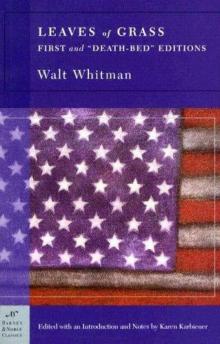 Leaves of Grass: First and Death-Bed Editions
Leaves of Grass: First and Death-Bed Editions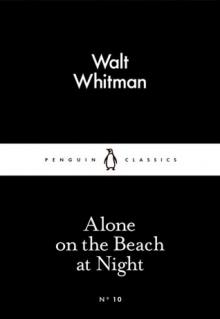 Alone on the Beach at Night
Alone on the Beach at Night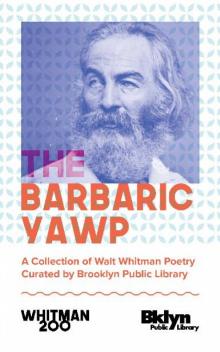 The Barbaric Yawp
The Barbaric Yawp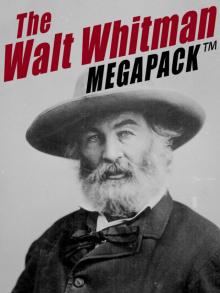 The Walt Whitman MEGAPACK
The Walt Whitman MEGAPACK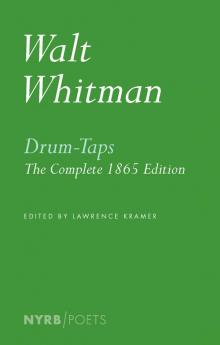 Drum-Taps: The Complete 1865 Edition
Drum-Taps: The Complete 1865 Edition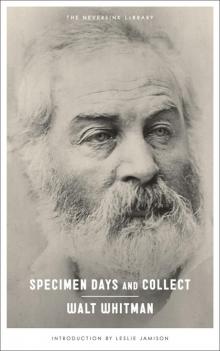 Specimen Days & Collect
Specimen Days & Collect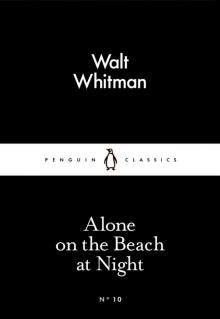 On the Beach at Night Alone
On the Beach at Night Alone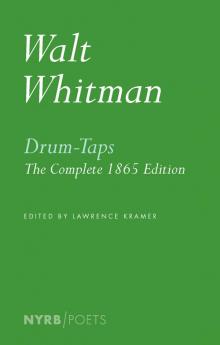 Drum-Taps
Drum-Taps